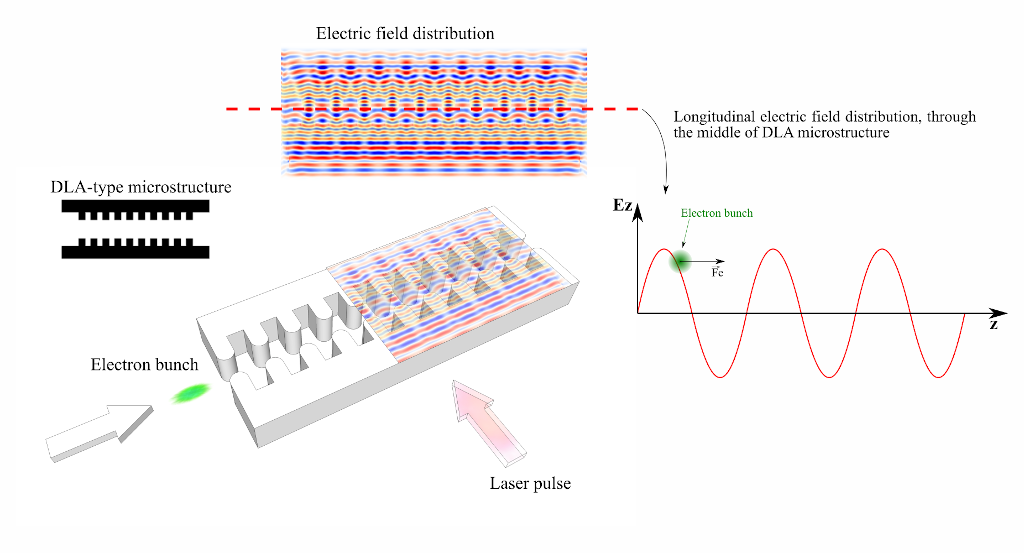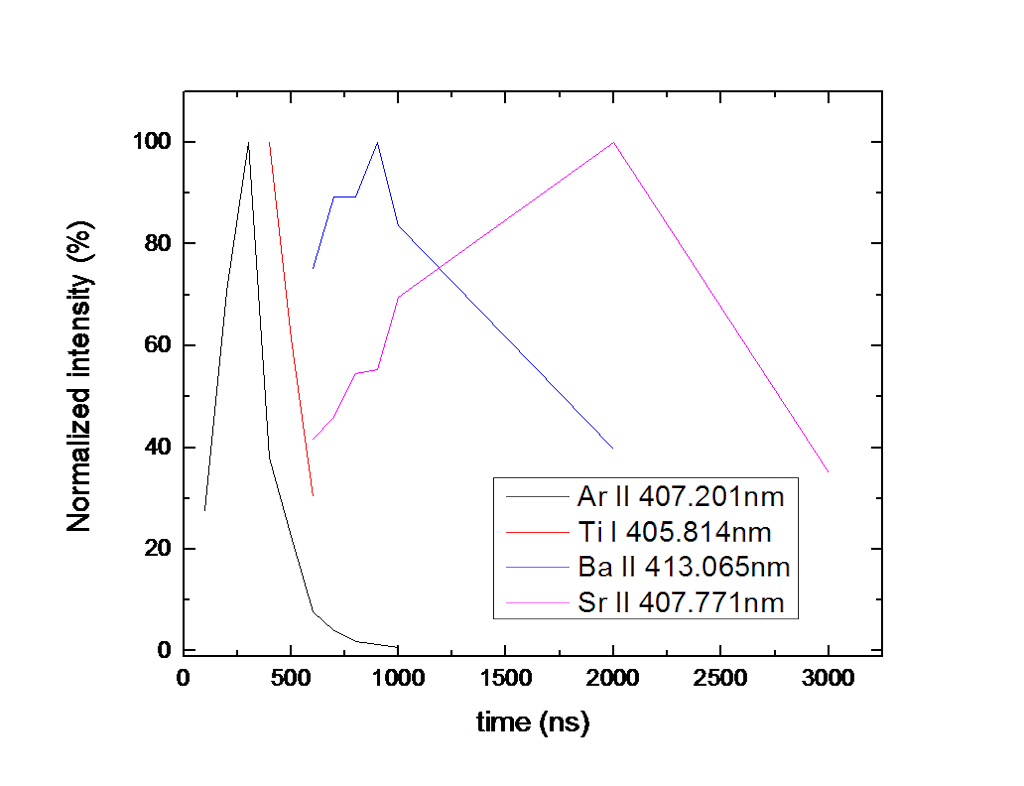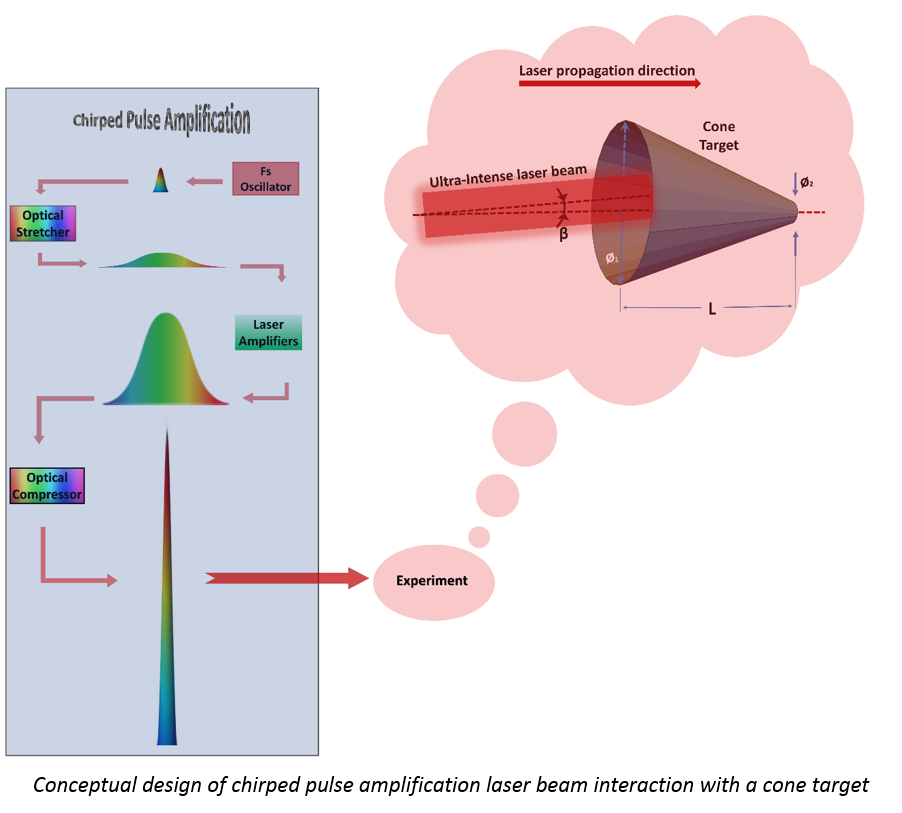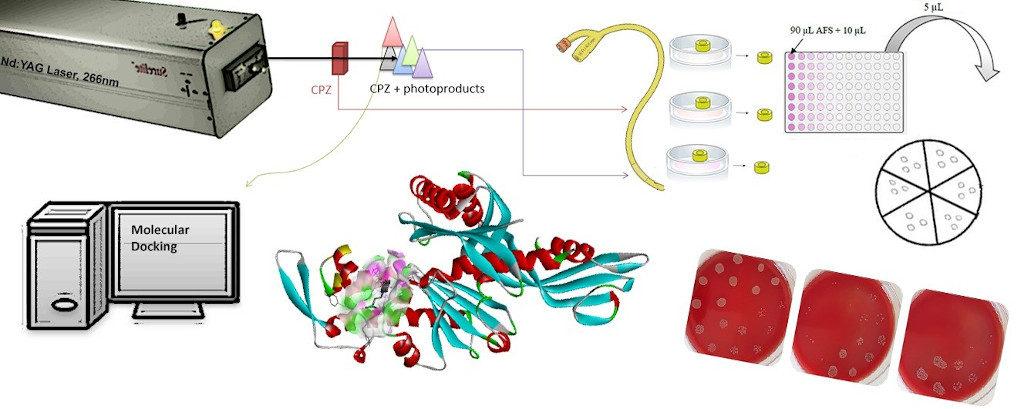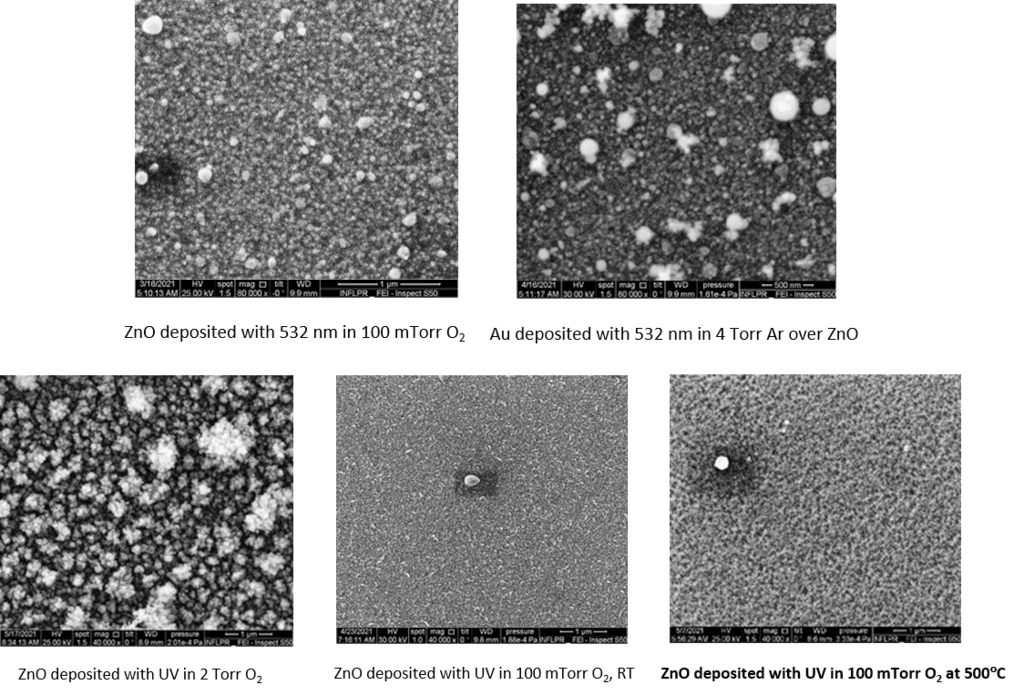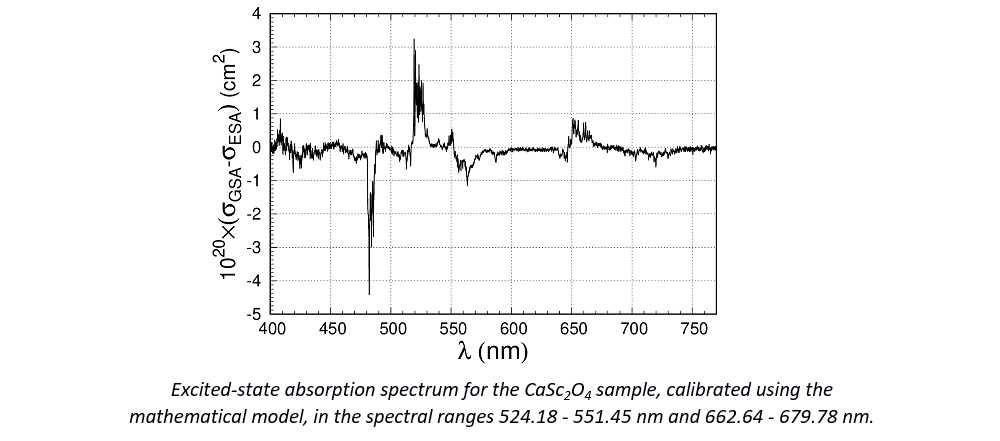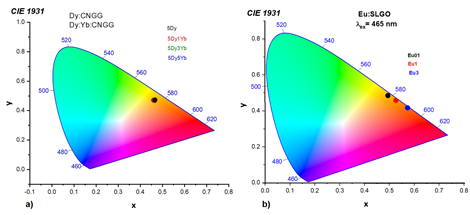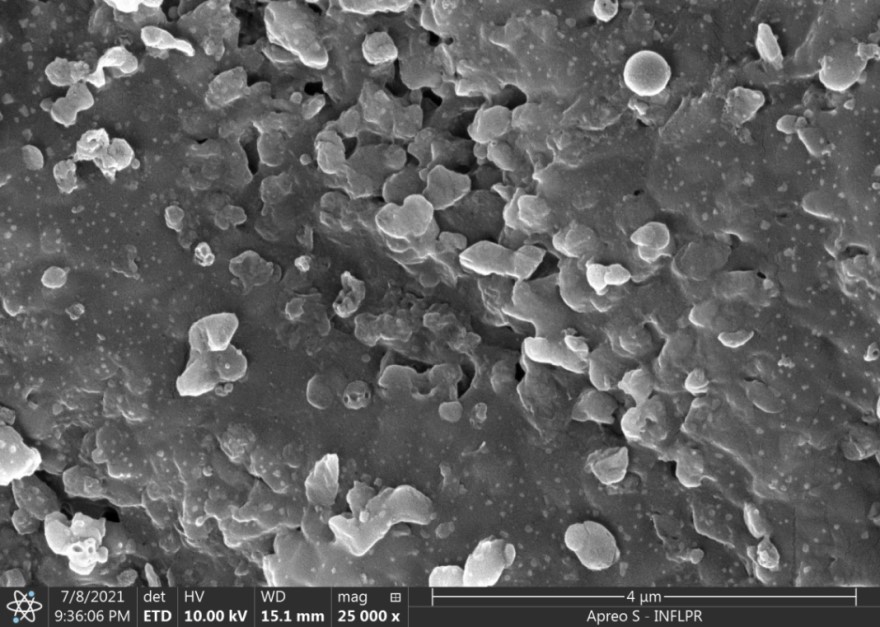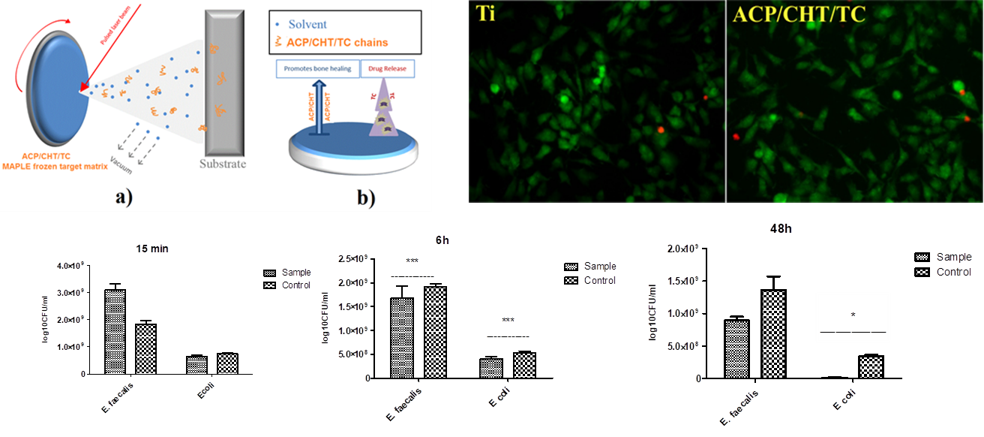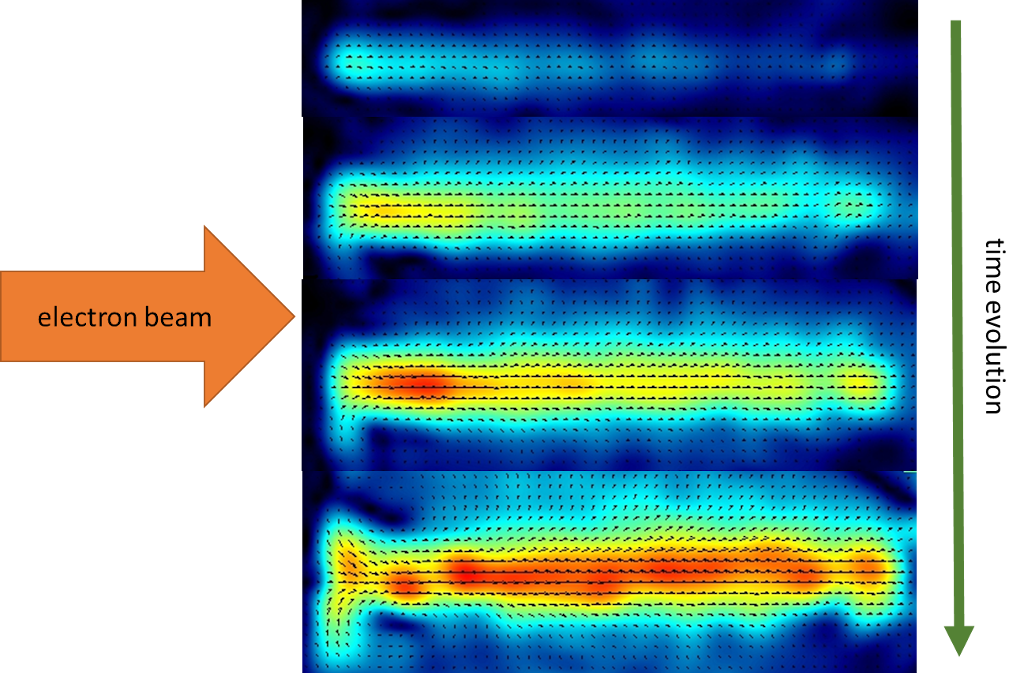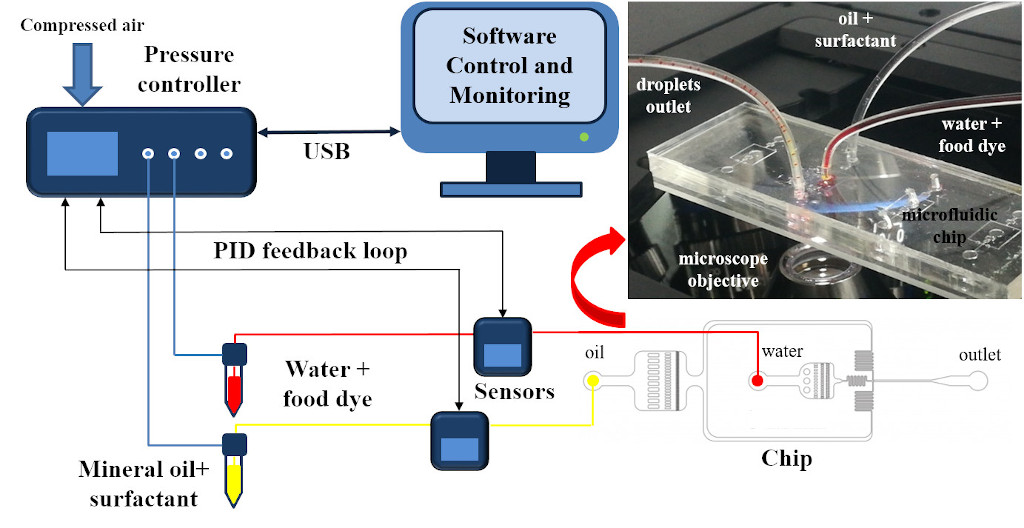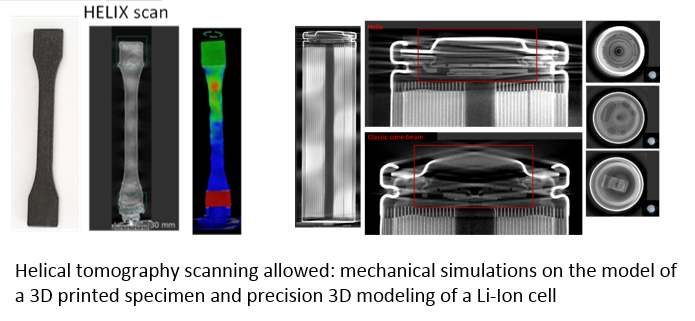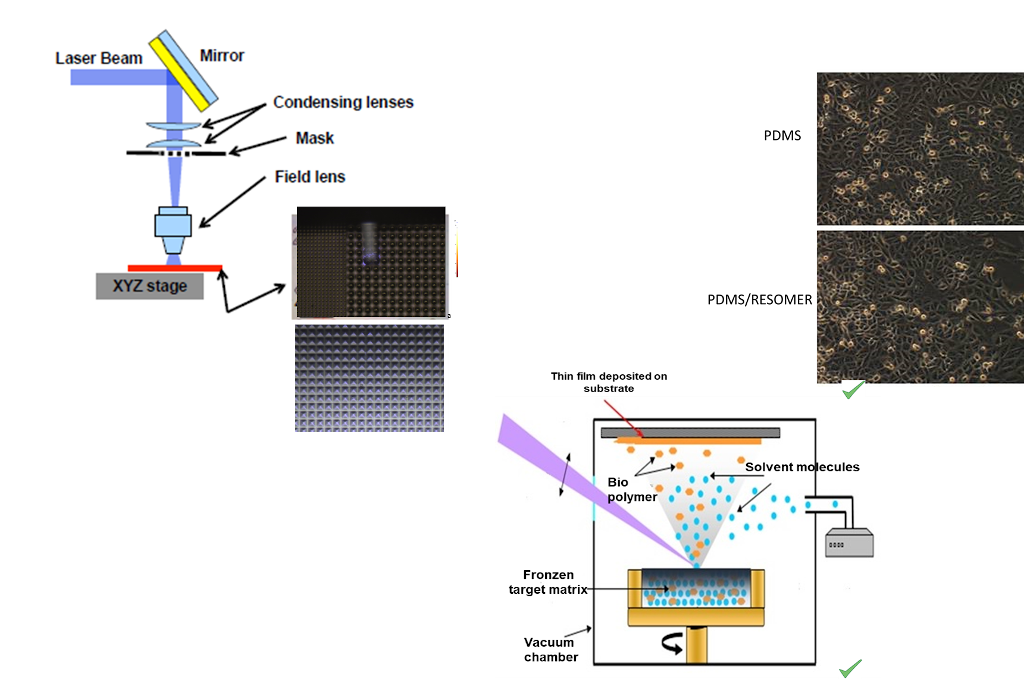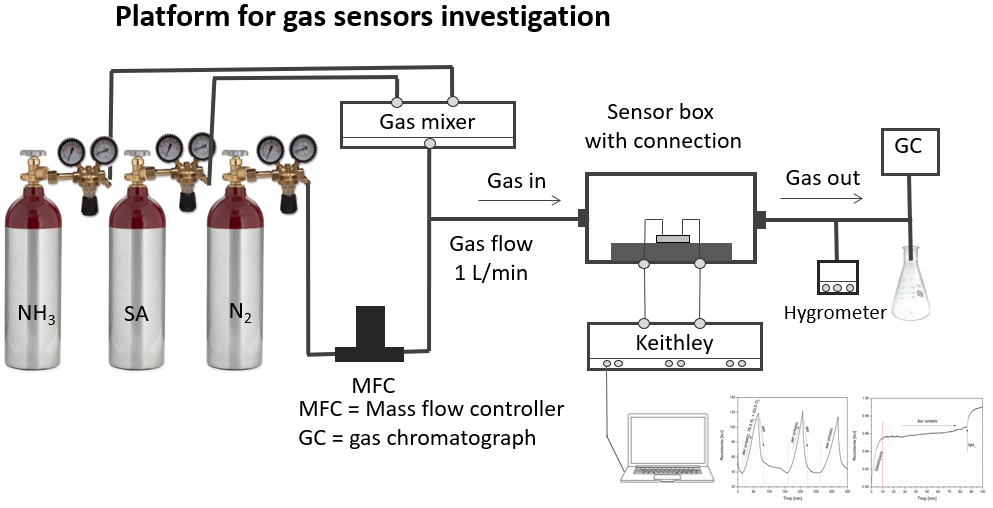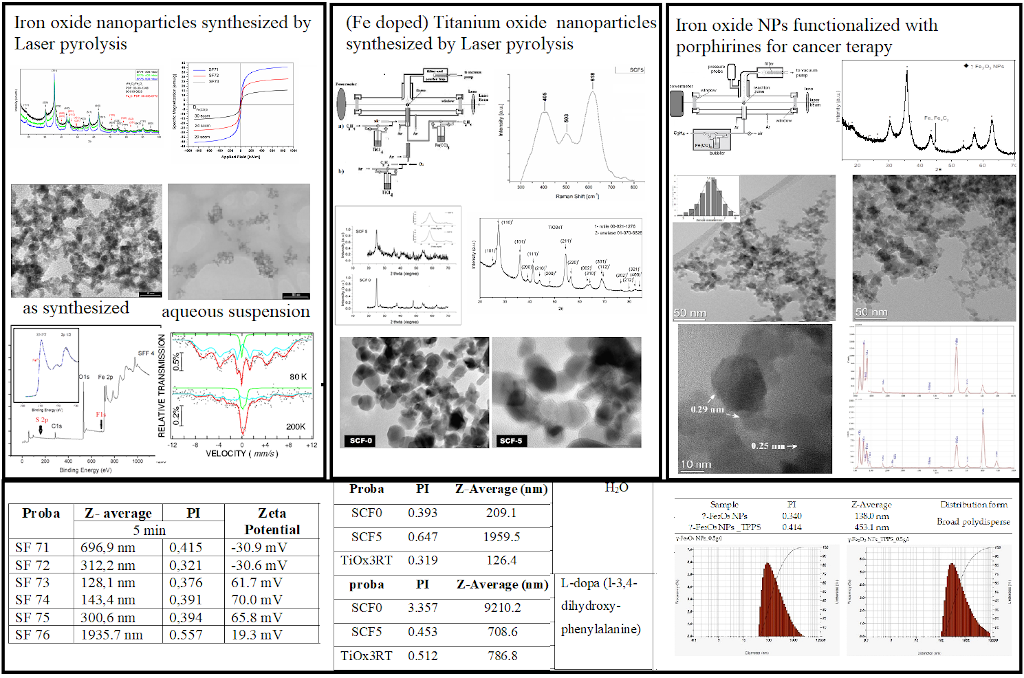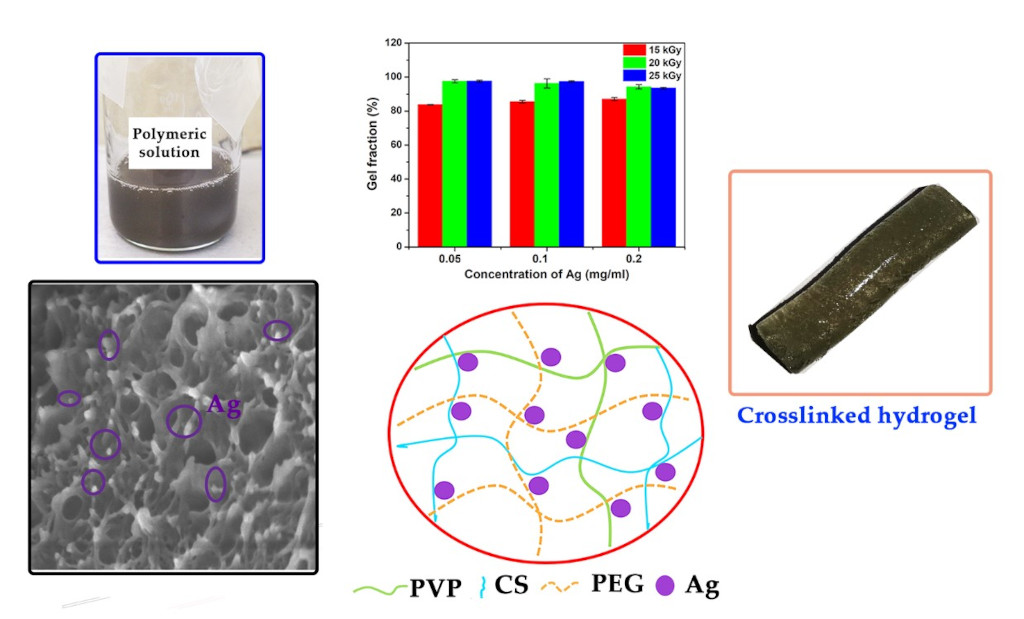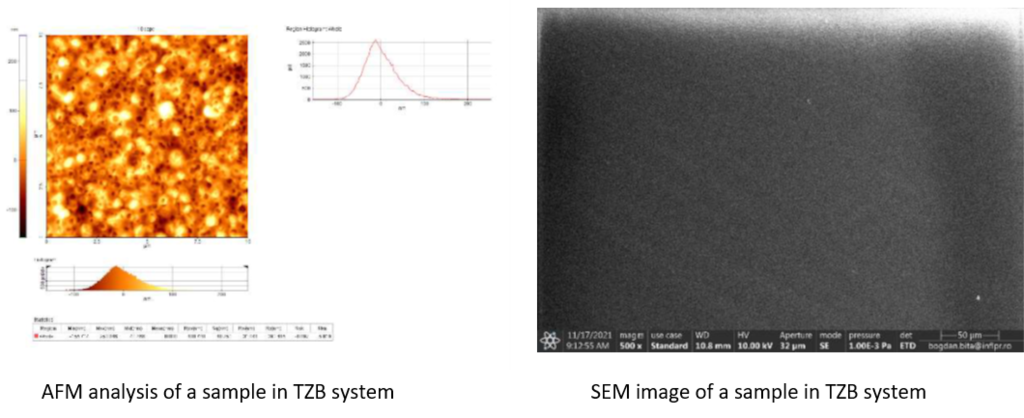
Shema de realizare a proiectului 19 15 01 01 - Anul 2021 - Etapa I
Phase no. 66
Responsible: Dr. M. Zamfirescu
Deadline: 13.05.2021
Title: "Simularea distribuției de câmp optic în structuri periodice de tip DLA și optimizarea geometriilor"
Abstract: DLA-type devices are periodic microstructures that can be utilized for laser induced electron acceleration. The acceleration mechanism, in this case, is similar to linear RF electron accelerators, using stationary waves. In the case of DLA structures, the electric field stationary wave is obtained through near-field focusing effects generated by the specific geometry of the structures. In this case, the material considered for fabrication is transparent for the central wavelength of the incident laser pulse, λ = 800 nm. The research activity up until this point was centered on designing the structures, running numerical simulations for the propagation of the electric field through the structures and an optimization step for the geometry.
The microstructures will be fabricated using 3D lithography. Therefore, the design of the structures was realized considering the refractive index of IP-Dip, which is a polymeric photoresist optimized for laser direct writring via two-photon absorbtion, at the micrometer scale. Numerical simulations have been conducted using finite-difference time-domain method. Both the design and the simulations have been done using Python programming language, along with MEEP software package, for solving Maxwell's equations. The resolution of the computational domain is set relative to the central wavelength of the incident laser pulse, i.e. the mesh step is defined as Δr = λ/15. The optimization dealt with modifying the geometry to accomodate for fabrication-specific characteristics, such as the laser spot size and shape.
A Python script was written, as well, to sweep through all the geometric parameters, in order to identify the optimal geometry that generated an electric field distribution which is appropriate for electron acceleration.
Graphic abstract:
Phase no. 67
Responsible: Dr. F. Gherendi
Deadline: 13.05.2021
Title: "Spectroscopie optică de emisie a plasmei netermice"
Abstract: The objective of this task was to investigate by optical emission spectroscopy of non-thermal plasma. The aim of these optical spectroscopic emission investigations with temporal resolution was the identification of plasma species, the determination of plasma parameters and the identification of the optimal plasma location of the materials to be deposited or modified.
Graphic abstract:
Phase no. 68
Responsible: Dr. L. Ionel
Deadline: 13.05.2021
Title: "Analiza numerică a distorsiunilor spațio-temporale în sisteme laser bazate pe metoda de amplificare a pulsurilor laser ultrascurte prin deriva liniara in frecvență (Chirped Pulse Amplification)"
Abstract: The main objectiv of this project is to investigate the effect of spatio-temporal distortions on the laser beam at the output of a Chirped Pulse Amplification (CPA) optical chain in order to design an optimum configuration of a high-power laser – solid target interaction system. For this, several laser configurations based on CPA technique have been designed and complex study for spatio-temporal distortions compensation has been elaborated in order to optimize the laser beam used for interactions with a solid target. A series of numerical studies based on raytracing technique have been developed in order to analyse the spatio-temporal aspects of the laser field during the propagation both through the CPA system and the laser-solid target interaction configuration. The numerical results show that uncompensated spatio-temporal distortions generate temporal resolution alteration, intensity reduction or beam pointing fluctuations at the output of the CPA system. Moreover, this model points out the importance of establishing the optimal values of the geometric parameters for a maximum compensation of the spatio-temporal distortions. These effects can be used to fine tune the output CPA beam pulse duration or to control or mitigate the current beam pointing fluctuations caused by specific internal processes during experiments which involve CPA laser systems. Using such numerical approaches, new solutions will be determined and results will be extended regarding the structure of the electromagnetic field under the current spatial and temporal limits for laser pulses in ultra-intense fields.
Graphic abstract:
Phase no. 69
Responsible: Dr. A. Dinache
Deadline: 13.05.2021
Title: "Generarea si testarea de cocktailuri de solutii din medicamente expuse la radiatie laser pe bacterii Gram-pozitive"
Abstract: Antibiotic resistance of bacteria is a worldwide problem, leading to extended illness and high mortality rates. Considering that, lately, the development of new antibiotics was weak, it is necessary to find alternative ways to fight multidrug resistance of bacteria. One of these ways is the modification of existent drugs by exposing them to laser radiation. Previous research showed that exposing medicine solutions to laser radiation may generate photoproducts with enhanced antimicrobial activity compared to the initial drug. Exposure to laser radiation of a antipsychotic drug, chlorpromazine (CPZ), leads to the generation of a cocktail of photoproducts with enhanced antimicrobial activity compared to unirradiated CPZ (CPZ NIR).
In this phase, we studied the antimicrobial effect of CPZ NIR and of laser irradiated CPZ (CPZ IR) on Gram-positive planktonic and adherent bacterial strains. The following methods were employed: determination of minimum inhibitory concentration (MIC), determination of minimum bactericidal concentration (MBC), and testing the anti-biofilm effect of CPZ NIR and CPZ IR on biomedical devices.
Best obtained results of CPZ NIR and CPZ IR were against Enterococcus faecalis strain. All tests, including the ones on Staphylococcus aureus strains, showed that CPZ IR had better antimicrobial activity than CPZ NIR.
In conclusion, the obtained results demonstrated the possibility of repurposing the antipsychotic drug CPZ as an antimicrobial compound, in both forms – unirradiated and irradiated, emphasizing that the photoproducts obtained after irradiation had improved antibacterial activity on the tested Gram-positive strains.
The possible mechanisms of enhanced biological activity of the CPZ IR photoproducts cocktail were determined through molecular docking. Good results were obtained for the CPZ NIR and CPZ IR activity, having good estimated free energy of binding (EFEB), in interaction with both FtsA (essential in cellular division) and with FabL enzyme (having an essential role, yet unexplored, in fatty acids biosynthesis). Results showed that the better inhibitory action of the irradiated medicine is probably due to the combined activity of the photoproducts.
Graphic abstract:
Phase no. 70
Responsible: Dr. C. Luculescu
Deadline: 13.05.2021
Title: "Aplicatii ale spectroscopiei laser pentru identificarea medicamentelor active"
Abstract: This study aims at various applications of Raman spectroscopy related to the pharmaceutical industry. Raman spectroscopy has proven to be a valuable analytical tool for both the identification and non-invasive quantitative estimation of relevant campounds in the pharmaceutical industry.
Many other techniques can be used to identify and quantify chemical compounds or components of various pharmaceutical formulations. What makes Raman spectroscopy ideal for these applications compared to similar techniques, such as FTIR, is the ability to measure through optically transparent containers and especially insensitivity to the response of water. Raman spectroscopy can be used both to identify chemical compounds and to provide quantitative measurements with micrometer resolution.
This study aims to highlight the ability of Raman spectroscopy to identify, authenticate and characterize the quality of pharmaceuticals. The emphasis will be on the intrinsic abilities of the method and less on the pharmaceutical compounds. Thus, a comparison is made between original and generic drugs, successful identification and application of various techniques specific to Raman spectroscopy to characterize the physico-chemical properties of drugs and active ingredients.
Graphic abstract:
Phase no. 71
Responsible: Dr. D. Miu
Deadline: 14.06.2021
Title: "Depunerea laser si caracterizarea morfo-structurala a multistraturilor Au/oxid pentru senzori"
Abstract: The present research stage report presents the morphology of Au/oxide multilayers obtained by PLD in various deposition conditions: pressure, substrate temperature, pulse number, energy/pulse, radiation wavelength. The ZnO monolayers and the surface of the Au layers deposited on top of the ZnO were characterized by Scanning Electron Microscopy (SEM), and the dependence of their morphology on the deposition conditions was established.
SEM images revealed the dependence of the morphology of the PLD-deposited ZnO films on the deposition pressure and the laser wavelength. Deposition onto substrates heated up to 500 oC, which do not affect the SAW interdigital transducers, also affect ZnO film morphology. The ZnO layers with the most promising morphologies for SAW sensors for gas (H2) detection are the most porous ones, which are obtained at high pressures (2 Torr O2), with UV radiation (355 nm). ZnO films obtained with UV in 100 mTorr O2 at RT and 500 oC also have structures of interest for sensors, namely nanowires, and a porous network of interconnected disordered nanowires, respectively. The Au films deposited in various conditions (pressure, number of pulses) onto ZnO reproduce, in our deposition conditions, the morphologies of the underlying ZnO layers. The Au/porous ZnO multilayers will lead to an improvement of the properties of the SAW sensors in which they are incorporated by increasing of the mass response of the sensor (through the ZnO film porosity) and of the acoustoelectric effect (through the metal/oxide structure).
Love-Wave SAW sensors were also produced and tested. These consisted in thin Au films with various porosities on a polymer (Polymethilmetacrilate – PMMA) guiding layer. The sensors were tested using a protein-based biosystem with applications in biosensors, the avidin-biotin reaction. The response of the sensors to biotin-avidin (frequency shift on functionalization) is improved when the Au film has an increased porosity.
In conclusion, all the objectives of the present research stage were reached, allowing realization of the next research stage, namely incorporation of the Au/oxide laser-deposited multilayers into SAW sensors for gas, and their characterization.
The research results were disseminated by sending an article for publication in Chemosensors (Manuscript ID: chemosensors-1254897), and by an OSIM patent proposal.
Graphic abstract:
Phase no. 72
Responsible: Dr. O. Toma
Deadline: 14.06.2021
Title: "Mecanisme de excitare in sisteme multi-site dopate cu ioni de pamanturi rare"
Abstract: Polycrystalline samples of Er:CaSc2O4 and Er:BaGd2ZnO5 in which the dopant lanthanide ions occupy multiple sites were synthesized. The Er:CaSc2O4 ceramic samples were synthesized by solid-state reaction using high-purity reactants and were cut into thin discs (less than 0.5 mm thickness) in order to decrease as much as possible the effects of light scattering on the optical spectra. The Er:BaGd2ZnO5 samples are nanometric powders obtained by a sol-gel method.
Three luminescent centers were identified in Er:CaSc2O4; two of them represent Er3+ ions occupying Ca2+ sites, while the third - Er3+ ions on Sc3+ sites.
The excited-state absorption processes were identified and characterized using optical spectroscopy methods. The excited-state absorption spectra were recorded using a pump-probe experimental setup with double modulation. The excited-state absorption spectra were calibrated using a simple mathematical model to separate the contribution of the excited-state absorption processes from those of stimulated emission, luminescence and ground-state absorption. The cross-sections of the excited-state absorption processes were thus found.
Energy-transfer processes between the identified luminescent centers were put into evidence using selectively-excited luminescence experiments and analysis of the decay curves.
Graphic abstract:
Phase no. 73
Responsible: Dr. C. Gheorghe
Deadline: 14.07.2021
Title: "Sisteme fotonice activate cu doi ioni trivalenti de pamanturi rare (Yb-Dy) bazate pe procese de conversie superioara in ceramici de tip CNGG. Noi tipuri de fosfori de tip perovskit cu emisie in rosu"
Abstract: I. Dy: CNGG and Dy, Yb: CNGG transparent ceramics were obtained by the solid state reaction method. All samples were characterized by X-ray diffraction, scanning electron microscopy and optical spectroscopy. Spectroscopic investigations of Dy3+ and Dy3+-Yb3+ ions in Ca3(Nb,Ga)5O12 (CNGG) ceramic were performed to evaluate their properties as phosphors materials or laser materials with emission in the visible domain. Dy → Yb energy transfer process was observed in the Dy, Yb: CNGG ceramic samples. CIE chromaticity diagram corresponding to the emission spectra of Dy3+ ions are located in the region (yellow-orange) for both types of samples, Dy: CNGG and Dy, Yb: CNGG.
II. Ceramic perovskite phosphors SrLaGaO4 doped with different concentrations of Eu3+ were synthesized by solid-state reaction. The synthesis method is modern, cheap and easy to achieve. The phase purity of phosphors was analyzed by X ray diffraction. The X-ray diffractograms show that all materials investigated SrLaGaO4 sintered are well crystallized indicating the only phase SrLaGaO4. The samples were characterized by optical spectroscopy (excitation and luminescence). Efficient red luminescence was obtained. Spectroscopic characteristics were investigated in order to assess the potential of this materials as phosphors for visible domain. Red phosphor materials play a key role in improving the lighting and backlit display quality of phosphor-converted white light-emitting diodes (pc-WLEDs).
Graphic abstract:
Phase no. 74
Responsible: Dr. R. Birjega
Deadline: 14.07.2021
Title: "Acoperiri cu compozite Mg,Al-LDH/polimeri (EVA si PP). Studiul comportarii pe termen lung in mediu apos si in mediu salin"
Abstract: Nanocomposite thin films of Mg,Al-LDH –EVA and MG,Al-LDH-PPA were prepared via PLD from targets of mixture of a commercial hydrotacit, 70 % weight, and a polymer, 30 %. The targets were obtained trough methods used for the preparation of bulk polymers. The films deposited on Si(001) or MgAZ31 r substrates preserve the crystallographic of the targets they originating from , are adherent and for those deposited at 532 nm on MgAZ31 superhydrophobic. The films studied upon saline solution immesion through SEM and EDS preserve their morphology and intial chemical composition.
Graphic abstract:
Phase no. 75
Responsible: Dr. C. Ristoscu
Deadline: 14.07.2021
Title: "Nanostructuri de apatită biomimetică cu antibiotic înglobat fabricate prin MAPLE"
Abstract: A major warning that emerged during the world's first fight against healthcare associated infections concerns the key role of the surface in virus viability and transfer. This makes it mandatory to repeatedly and carefully clean the surfaces to prevent any infection. Our approach is based on a local and intensive release of the drug to overcome the potential side effects associated with prolonged administration. Our method is based on coating the surfaces with laser radiation with an organic / inorganic composite mixture (64.8% amorphous calcium phosphate - 35% chitosan - 0.2% tetracycline) able to fight against infectious agents and keep activity for a long time, up to a few days.
Scanning electron microscopy, Fourier transform infrared spectroscopy, X-ray diffraction, wettability measurements along with antibacterial and osteogenic tests were used to characterize the physico-chemical performance and antibacterial efficiency of the deposited structures. Prolonged release in simulated fluids (at least up to 72 hours) of the drug-containing composite mixture (tetracycline) has been demonstrated by weight loss and UV-VIS studies. The drug release profile is based on two stages: a very rapid initial release (in the first hour), followed by a slower, active course for the next 72 hours and probably longer.
Optimized coatings strongly inhibited the growth of tested bacteria (Enterococcus faecalis and Escherichia coli), while the incorporation of drugs promoted an anti-inflammatory response in the early stages of the healing process. The addition of tetracycline had no impact on composite cytotoxicity in vitro, the coatings proving excellent biocompatibility, supporting a normal development of MG63 cells.
Therefore, it can be considered that the proposed structures opens the perspective of a new generation of antimicrobial coatings for implants, but also for the prevention of nosocomial infections.
Graphic abstract:
Phase no. 76
Responsible: Dr. C. Ticos
Deadline: 15.09.2021
Title: "Fenomene termice la absorptia fasciculelor de electroni de catre micro/nano particule"
Abstract: During phase 76 of the contract 16N /08.02.2019, thermal phenomena were investigated at the absorption of electron beams by levitated microparticles in a radiofrequency plasma. The investigation methods were based on the determination of the mean square velocity and on the determination of the velocity distribution but also of the velocity components. Following these investigations, it was found that the irradiation of the microparticles levitating in the plasma with a beam of 12 and 13 keV, respectively, led to an increase in the temperature of the microparticle cluster.
Graphic abstract:
Phase no. 77
Responsible: Dr. C. Porosnicu
Deadline: 15.09.2021
Title: "Caracterizarea retentiei de combustibil nuclear (D2) in filmele de W, Fe respectiv Cr co-depuse prin tehnologia HiPIMS"
Abstract: The components of nuclear fusion reactors have the role of protecting the structure of the rection chamber and other sub-components from the negative effects of the plasma wall interaction. EUROFER, is the structural reference material for the future DEMO reactor. The objective of this phase was to study the optimal conditions for the deposition of thin films containing tungsten, chromium and iron and deuterium gas inclusions. Thin layers containing the materials mentioned above were produced. The coatings were obtained by means of DCMS and HiPIMS methods. All the thin films obtained were studied from a morphological, structural, compositional point of view, as well as from the perspective of characterizing the deuterium retention mechanism in these materials from the perspective of nuclear fuel retention during the operation of the fusion reactor.
The W-Cr and W-Fe films obtained by deposition using the DCMS and HiPIMS methods in argon-deuterium atmosphere were subsequently subject to morphological analyzes by SEM investigations and compositional analysis by X-ray fluorescence (XRF) technique. This study being mainly focused on investigating the behavior of the deuterium release from the obtained structures, TDS measurements were performed to determine the deuterium inventory in the samples. The W-Cr and W-Fe structures co-deposited in the Ar + D2 atmosphere showed a high uniformity of the resulting film and for the thin films obtained in DCMS regime, surface structures were highlighted, in the form of hemispheres. from the analyzed structures presents the characteristics similar to the release of nuclear fusion fuel from metals over wide temperature ranges. Deuterium desorption at low temperature is attributed to release from low energy traps.
Graphic abstract:
Phase no. 78a
Responsible: Dr. E. Axente
Deadline: 15.10.2021
Title: "Generarea controlata de nanopicaturi in dispozitive microfluidice pentru captare unicelulara ( PARTIAL ETAPA I)"
Abstract: In this project we have fabricated, characterized and tested the functionality of an innovative platform for the controlled generation of monodispersed droplets, with small volumes (<nL), inside microfluidic devices. We have briefly decribed the theoretical aspects of droplets formation and introduced our biochips microfabrication technologies of both hybride PDMS/glass and Foturan glass biochips by laser techniques. Biochips were further assembled and connected to the perfusion system, and then specific flow configurations for droplets generation were investigated. We have obtained droplets with diameters of 40, 80 and 120 µm respectively, that correspond to very low volumes of 34 , 268, and 905 pL, respectively. We demonstrated that both the dimensions and the droplets generation rates could be easily tailored by appropriate adjustment of preasures and flow rates (for fixed viscosities of the fluids). Possible applications reffer to materials synthesis (polymeric monodispersed spheres) but also for unicellular traping and isolation within droplets for biomedical applications (to be continued in the second part of this phase).
Graphic abstract:
Phase no. 79
Responsible: Dr. I. Tiseanu
Deadline: 15.10.2021
Title: "Aplicatii ale tehnicilor de analiza microstructurala a materialelor compozite prin microtomografie de raze X si procesare avansata de imagini"
Abstract: In this phase, X-ray microtomography (microXCT) was used as a completely non-invasive analysis technique for optimization, validation and control of the process of high precision additive manufacturing by different technologies (LDM technology - Liquid Deposition Modeling; FFF technology - Fused Filament Fabrication; SLS method - Selective Laser Sintering). Due to the high resolving power of the internal details, microXCT could be applied from the characterization of the raw material morphology to the final product. A wide variety of materials were used in the printing process, such as: ceramic suspension, composite filaments reinforced with glass / carbon fibers and metal or polyamide powders.
The report presents the detailed protocol for the complete, defectoscopic and metrological analysis, on industrial components printed by the SLS technique with micro-steel powder as raw material. The observed defects (pores smaller than 20 µm) confirm the studies so far related to this technology, namely that the precision of the laser and local melting, the dimensional uniformity of the powder and the working principle give the printed parts very good physical-mechanical properties.
Another novelty element implemented in this paper is the application of a new software module for performing mechanical simulations (tensile, torsion, etc.) based on the CAD model obtained by tomography of 3D printed specimens. It can be considered that, through the multitude of information obtained through microXCT and the post-processing protocols developed, it is possible to optimize additive manufacturing methods, classify products manufactured in industry and support the choice of quality raw material.
Another important section of the report was dedicated to the implementation of a new methodology for X-ray imaging of Li-Ion battery cells. Although this research is in a preliminary stage, encouraging results have already been obtained in establishing the optimal high-fidelity tomographic scanning configurations of Li-Ion cells, especially by implementing and validating of the helical scanning and reconstruction method. Thus, it was already possible to carry out a first study on the identification of structural defects in Li-ion batteries that can lead to decreased performance like, for example, their short circuit. Another very promising result can be considered the successful testing of a method for identifying functional / defective Li-Ion cells by statistical analysis of radiological contrast coefficients. The measurement methodology and the calculation algorithm of the contrast coefficients were implemented and tested on a relatively small batch of Li-Ion cells.
Graphic abstract:
Phase no. 80
Responsible: Dr. V. Dinca
Deadline: 15.10.2021
Title: "Dezvoltarea de bio-platforme biocompatibile micro si nanostructurate pentru studiul efectului sinergetic al topografiei si functionalizarii (specific functionalizata sau complet functionalizata) asupra celulelor mamaliene -obtinerea si analiza morfologica si structurala de substraturi structurate prin texturare laser, MAPLE si/sau prin transfer indus cu laserul –LIFT"
Abstract: For any biomedical application, understanding how cells interact with materials that have both topographies and functionalizations that can be associated with an improved cellular response is of major importance. The production of such surfaces with controllable chemical and physical characteristics is of interest for the study of the influence of substrate properties on cellular functions, leading the scientific community to the recent development of new functionalization techniques, but also microfabrication of substrates (eg lithography, replication, laser texturing, etc). In this context, the objective of this phase was to obtain multidimensional micro-structured surfaces by laser texturing (using an excimer laser assisted by masks with variable attenuation and replication in PDMS) and their functionalization with a biodegradable polymer RESOMER using MAPLE technique to be used in study the effect of surface characteristics on mammalian cell response. Preliminary results on Vero line cells presented showed that microtopography of the substrate but also the functionalization given by biodegradable polymeric coatings are important factors in the cellular response, without presenting citotoxic effects. This could be an indication offering interesting perspectives on the use of surface characteristics controlled / adjusted by laser methods for designing future tissue engineering systems, but also for the study of cellular mechanisms. During this phase, 2 oral papers and one invited to international conferences were presented, as well as two articles were published in ISI-listed journals (One in the red zone, FI. 5.076, one in the yellow zone FI 3.398).
Graphic abstract:
Phase no. 81
Responsible: Dr. S. Vizireanu
Deadline: 15.11.2021
Title: "Realizarea unei platforme de investigare a potențialului aplicativ al materialelor nanostructurate (masuratori electrice si senzoristica)"
Abstract: In this research stage we assembled a complex experimental setup, developed to determine the functionality of a wide range of gas sensors in order to i) evaluate the electrical characteristics of active materials in sensors and ii) to measure the sensor response when exposed to different concentrations of gases. This experimental system (platform) for sensors characterization was obtained by cumulating in a whole assembly several existing instruments/devices and modules, previously purchased or made during this stage. This setup contains the following subsystems:
- sensor test chamber which includes the module for electrical connection of the sensors.
- gas intake and control unit containing: gas bottles, gas mixer and mass flow controllers, pumping and pressure reading system.
- current / voltage source, Keithley 2612, connected to one computer through the RS-232 port;
-computer for command and control of the Keithley, for data acquisition, but also for control of gas flows.
The experimental system designed and built during this stage was tested to evaluate a significant number of sensors, both commercial and obtained in the laboratory by laser and plasma techniques. We demonstrated the functionality of this platform and developed a procedure for sensor measurements. This platform will be used for sensor measurements made of different nano-materials obtained in INFLPR. Such a platform is also useful for the electrical characterization of nanostructures synthesized in our group (thin films of graphene and vertical graphene, nanoparticles and hybrid nanostructures based on graphene/nanoparticles and nanostructures treated by different plasmas), as in literature there are reported similar nanostructures having application in gas sensors.
During this stage we identified several providers of stable electrodes over time, which permit high temperatures, i.e., above 600 C, on which we deposited various nanomaterials. We solved the problem of fast and stable electrical contact for several types of electrodes. During the electrical measurements we noticed that the tested sensors must be stabilized in time (for few tens of minutes) after which the sensors could be measured. We identified several methods to improve the sensitivity to external stimuli of our nano-materials, such as: decoration, plasma activation, nitrogen doping, heat treatment, LIFT transfer etc. We identified and discussed with several INFLPR people interested in sensors measurement, including PhD students. The objectives assumed were attained and we created a starting point for future measurement in the field of gas sensors application.
Graphic abstract:
Phase no. 82
Responsible: Dr. F. Dumitrache
Deadline: 15.11.2021
Title: "Studii privind stabilizarea dispersiilor concentrate pe bază de nanoparticule sintetizate prin piroliză laser cu aplicații în medicină și farmacologie"
Abstract: Synthesis of iron oxide nanoparticles (NPs) in various sizes (4 nm-18 nm) is reported. NPs have quasi-spherical shapes, are organized into aggregates such as loose chains or compact clusters and that way influences the dispersibility and electrostatic charge of NPs in water-based fluids. The magnetic and morpho-structural properties depend on the size of the NPs. Iron oxide NPs: maghemite / magnetite with very high magnetization: up to 85emu / g, superparamagnetic or ferrimagnetic NPs. were synthesized under determined experimental conditions. The synthesis of NPs of TiO2 and TiO2 doped with Fe by the method of laser pyrolysis are described. Prior to obtaining FeO-doped TiO2 nanopowder (12.28 at%), the optimal experimental conditions for obtaining TiO2 in the anatase or rutile phase were identified as reference samples. . Thus, the characterization of the reference sample for Fe doping indicates the majority presence of the anatase phase (~ 81%) and the average crystallite size in the range (7.4-14.3) nm. NPs are comprehensively analyzed: XRD, TEM, SAED, EDS, XPS, Raman, Mossbauer, magnetization curves. Simple or stabilized suspensions (L-DOPA, chitosan, CMC-Na) were prepared, analyzed by TEM and DLS, finding optimal solutions for obtaining concentrated stabilized dispersions in aqueous media. One of the 6 nm medium diameter maghemite iron oxide NPs powders is used for the preparation of stabilized and functionalized suspensions with tetraammonium porphyrin (TPPS). NPs and the stabilized / functionalized suspension are comprehensively analyzed. The suspension is tested as a photodynamic agent for the treatment in melanomas, the results obtained being remarkable: The anti-tumor effect of ɣ-Fe2O3 NPs functionalized with (TPPS) on human melanoma cells exposed to PDT (photodynamic) by blue LED irradiation was proven. The effect of cellular apoptosis is initiated at lower concentrations of TPPS even than simple treatment with TPPS solution, because cell internalization occurs more easily through iron oxide NPs.
Graphic abstract:
Phase no. 83
Responsible: Dr. M. Bercu
Deadline: 15.11.2021
Title: "Analiza de gaze multi-component in fotoacustică aplicată poluanţilor"
Abstract: Human health and ecosystems are threatened by air pollution and currently, the second biggest problem of the humans, after climate change, is represented by air pollution. With increases in urbanization and developments in human life and comfort in the last years, the air quality has attracted considerable attention. Emissions of volatile organic compounds (VOCs) such as benzene and toluene in environmental air are a consequence of urbanization and development. Ammonia is an environmental pollutant which has an very important role in the formation of secondary inorganic aerosols, a main component fine particulate matter (PM2.5) concentrations in the urban atmosphere. A laser photoacoustic spectroscopy detector was used to measure the concentrations of ammonia, benzene and toluene in spring and summer of 2021(from March to August) in three monitoring city points located in Magurele (Romania). Our findings showed higher concentrations for benzene and toluene in the summer season than in the spring period. The mean concentration values of benzene and toluene varied in the spring season from 0.186 ppb to 1.573 and from 0.947 ppb to 12.460 ppb. The mean benzene and toluene concentrations in all three sites were low on average according to the European Comission, with the exception of some high values registered in the summer period. The average diurnal variations of the benzene and toluene show a higher concentration values in the first part of the day compared to the evening and this behaviour correspond to the traffic rush hours. The toluene/benzene (T/B) ratio shows that road traffic remains the main source of local emission in environmental air. The ammonia concentrations from the ambient air were elevated in summer (mean of 46.03 ± 8.05 ppb) compared to those measured in spring (18.62 ± 2.92 ppb), which means that atmospheric temperature has an effect on ammonia concentrations. The highest mean ammonia concentrations occurred in August in the P3 site with 100.68 ± 11.12 ppb, and the low mean ammonia concentrations occurred in March in the P2 site with 0.161 ± 0.03 ppb. Motor vehicles seem to be the to be major contributors to the elevated ammonia levels during the monitoring period. The use of CO2LPAS detector to monitor multiple environmental gases makes this a promising method for future air quality monitoring.
Graphic abstract:
Phase no. 84
Responsible: Dr. M. Demeter
Deadline: 10.12.2021
Title: "Hidrogeluri compozite pe bază de micro- și nanoparticule polimerice și/sau metalice"
Abstract: This project reports the obtaining and characterization of composite hydrogels synthetized from complex polymeric mixtures based on chitosan, PVP with different molecular weights, PEG/PEO, acrylic acid/lactic acid incorporated with Ag/Au nanoparticles, by e-beam crosslinking. The main objective was to optimize the composite hydrogels recipe to be use as potential scaffolds in medicine. Another secondary objective was to optimize the recipe for obtaining composite hydrogels without the addition of chemical crosslinking reagents and to obtain a stable hydrogel at the sterilization dose of 25 kGy.
The experimental conditions were optimized so as to obtain homogeneous hydrogels, with a high degree of elasticity and swelling capacity in environments similar to the human body. Then, the composite hydrogels were prepared by direct incorporation of NP with different concentrations into the optimized polymer mixture and crosslinked by irradiation with doses in the range of 15-30 kGy.
Hydrogels were characterized physico-chemically, structurally and morphologically by determining the gel fraction, swelling capacity, stability and biodegradation in environments similar to the human body, rheological analysis, FTIR and SEM. The experimental results were correlated and analyzed according to the absorbed dose and the concentration of NP. Composite hydrogels have a gel fraction of over 85% at a dose of 25 kGy and a swelling capacity of between 1200-2500% in PBS and over 4000% in water. Specific values of hydrogels with superabsorbent properties. Composite hydrogels have a stable structure, with a biodegradation rate of only 6%, after 42 days.
Rheological analysis showed that composite hydrogels with 0.2 mg/mL Ag have a modulus of elasticity (G') of about 20 kPa, being almost three times higher than the elastic modulus of composite hydrogels prepared with lower nanoparticle concentrations. The network parameters specific to hydrogels, Mc, ξ and Ve are influenced by the concentration of NP, in the sense that by increasing the concentration of NP, the parameters Mc and ξ decrease, which leads to the formation of a hydrogel with a dense network.
At high concentrations of NP, hydrogels showed a compact network structure in which NPs are regularly distributed, spherical in shape and relatively equal in size. It can be said that by using NPs of adequate size, a uniform distribution of NP in the hydrogel is ensured, which attaches directly to the polymer chain in the mixing process and becomes stabilized in the hydrogel network as a result of the crosslinking reaction with EB.
Graphic abstract:
Phase no. 85
Responsible: Dr. B. Sava
Deadline: 10.12.2021
Title: "Proiectarea si obtinerea de filme prin PLD, metoda sol gel, spin-coating sau MS, in sistemul ternar ZnO-B2O3-TiO2. pentru imbunatatirea proprietatilor filmelor din sistemul binar ZnO-TiO2, pentru aplicatii in eco-nanotehnologii"
Abstract: During this phase, thin layers were made from the ternary system titanium oxide-zinc oxide-boron oxide, by the sol-gel method, alkoxide precursors, to obtain homogeneous ternary thin layers, of advanced purity, at very low heat treatment temperatures , with high efficiency, for use in optoelectronics and photocatalysis, but also as a basic system for doping with rare earths for use in magneto-optics and lasers. Three sets of samples were performed, with varying boron oxide content, while equimolar percentages were kept for TiO2 and ZnO, as a result of previous research, which showed that this molar ratio is optimal for solgel samples. Stable sols were obtained, with gelling times under normal conditions, of 5 days for sample TZB1, 4 days for sample TZB2 and 15 days for sample TZB3. Depositions were made by the method on a rotating substrate (spin-coating), the substrates being microscope slides. Three layers were deposited, at three rotating speeds of the substrate, the samples being heat treated at 110, 150 and 200oC. X-ray diffraction, XRD, of the investigated samples shows that all samples are mostly amorphous / vitreous, with small crystallization peaks, corresponding to the three oxides and a binary compound, titanium borate. By Xray photoelectron spectroscopy, XPS, all elements of the sample were identified, Ti, Zn, B and O, and as impurities N, C and Cl. Chlorine and carbon come from reagents used as precursors. UV-Vis spectroscopy showed that the samples had a lower transmittance than the control sample, the highest transmittance of over 75%, being recorded for heat-treated samples at a temperature of 200oC. FTIR spectroscopy identified the specific vibration maxima of the Ti-O and B-O bonds, which are visible for all samples in the wavelength regions of 750-800, 850-900 and 1100-1200 cm-1. In the area 1400-1500 cm-1 are recorded the specific maxima of C, remaining in samples from precursors. Atomic force microscopy, AFM, indicated that the samples are homogeneous, with a roughness of 40-60 nm and that the heat treatment must be performed under controlled conditions. Scanning electron microscopy, SEM, confirmed the homogeneity of the deposits for all samples.
During this phase, 4 articles were published in ISI indexed journals with high impact factor, 3 of them in red zone journals and 5 presentations were made at international conferences, of which three oral presentations in plenary and two posters.
Graphic abstract:

